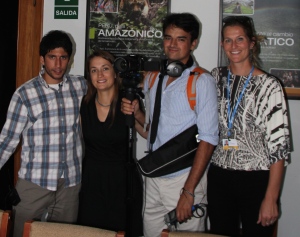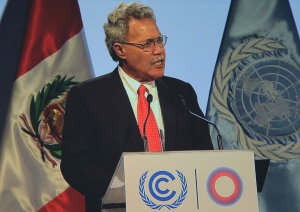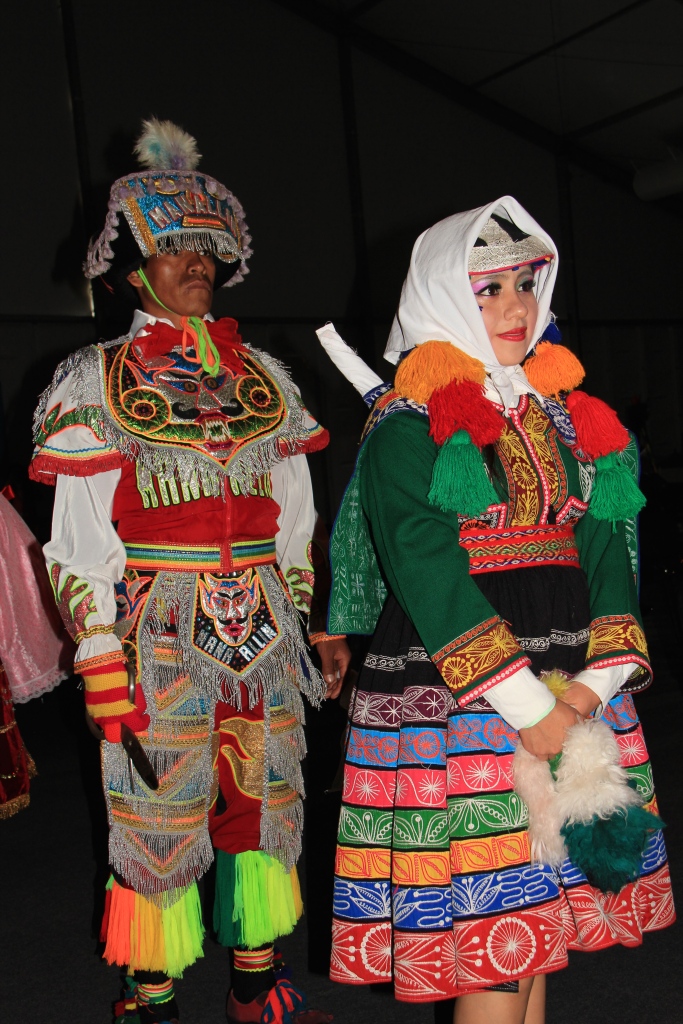Lima welcomed us with a pale sky, bustling streets and a promise of being unforgettable. Through the taxi window, flat topped rectangular buildings of tan brick blurred together as our driver shifted into a higher gear, accelerating us down the bumpy road, weaving freely between a towering blue bus and a dented sedan. The building edges crumbled slightly, bare rebar extended from the walls, reaching for the sky as if waiting for another level to be added. The neighborhood shifted with added wood facades painted only the brightest colors—lavender, pink and yellow, green with orange trim. We passed under an arching pedestrian bridge with a sign reading: Peru, lleno de creatividad. A man with dark eyes and rounded waistline weaved through stationary traffic selling newspapers. Sophisticated apartments with high gates sat adjacent to gaudy casinos—royal blue with a golden sun, black with cards drawn on it and a lighthouse protruding from the front. A grassy median featured bush sculptures of panda bears intricately trained and trimmed to feature the bicolored bear in alternating green and white foliage. Horns honked and traffic inched, fighting towards the heart of this expansive city of 12 million. Overhead a banner featured a wreath of colored word bubbles and the slogan, Voces por el Clima with the insignia for COP20.
COP20 held the international spotlight as the world looked on to see what the world’s leaders would agree on in regards to combating climate change. Presidents, prime ministers, delegates, non-governmental organizations (including ours, the UC Revelle Program on Climate Science and Policy), businessmen and women and so many other thinkers and leaders gathered to share ideas. This December, five other Scripps graduate students and I went to Lima to represent Scripps, communicate ocean science, and gain insight into the world of international policy.
As graduate students interested in conducting science that can be used by policymakers for a better tomorrow, attending such an event was a great opportunity. It also provided a chance to be immersed in Peruvian culture and consider how climate change is affecting the host country.
“These types of experiences are invaluable and greatly enhance my understanding of how the science we do on a daily basis is translated into international policy decisions,” said Noah Ben-Aderet, a PhD candidate in marine biology at Scripps.
Change can, and does occur on many levels—individual, community, country, region, world. Each of these levels is important to solve widespread issues like climate change, but there is not one solution that will fit at each level or region. The overarching goal of the COP process is to form international agreements toward climate mitigation. But the COP is more than a place for policy debates; it is a platform for idea-sharing.
In partnership with the U.K.’s Plymouth Marine Laboratories (PML) and several other international agencies, Scripps hosted an educational exhibit on oceans. It provided a platform for us to discuss how climate change is affecting the oceans with interested delegates and attendees. The educational conversations are aimed to remind negotiators about the oceans, the largest ecosystem on earth, as they make climate policy. It also provides an opportunity to hear from participants what concerns they have for our oceans.
“The exhibition booth was very popular with a near-constant flow of delegates keen to learn more about the effects of climate change on the ocean,” wrote Carol Turley, senior scientist at PML in a post-COP20 report. “Compared to our first foray to the UNFCCC COP in Copenhagen in 2009, most delegates have now heard of ocean acidification, in addition to the other two stressors (higher temperature, lower oxygen). Nevertheless, they were not always aware of its potential effects on ecosystems, aquaculture, and human society and were pleased to receive the summaries for policy makers and other outreach material.”
At the heart of idea-sharing is education—the spread of knowledge gained through experience. As student scientists increasing the communication of our science is extremely important. We formed Ocean Scientists for Informed Policy, a group dedicated to understanding policy and to communicating science to policy makers and to a lay audience. The effort includes blogging from the COP and creating short films on ocean issues raised during the event. During our time in Lima, I worked with fellow marine biologists Kathryn Furby, Noah Ben-Aderet, and filmmaker Chris Neighbors to produce several videos.
“The goal of the videos is to communicate our experiences and the important issues at COP to a broad audience,” said Furby, a Scripps PhD candidate in marine biology. “It was important to me to communicate how global policy and science intersect on a large scale. I also wanted to personalize a large, sometimes overwhelming, conference. Grad student scientists have a great voice for communicating complex ideas. As an unexpected consequence, the videos gave us a concrete reason to approach important players at the COP. In Peru we were excited to find that people were engaged in science and deeply concerned about climate change. As ocean scientists, our perspective seemed encouraged and appreciated. Through these videos we interviewed interesting people from all over the world.”
Some of our videos connected climate issues specifically with Peru, which allowed us to connect with the host country at a more meaningful level. In the last month since publication, the videos have reached almost 20,000 viewers.
For me, the richest aspect of the week stemmed from the diversity of people I exchanged ideas with. Scripps students attended a dinner hosted by the United Nation’s Reducing Emissions from Deforestation and Forest Degradation program and spoke to people working on the ground in Indonesia, the Democratic Republic of Congo and Cameroon about the challenges of stopping deforestation and poaching. I met a U.N. event organizer who discussed the changes he’d seen in the last 15 COPs and his hopes for the next COP in Paris in December, an event anticipated to produce a treaty guiding international action in the future. I spoke about climate change with taxi drivers who wondered why the U.S. uses gasoline in cars instead of natural gas like they use in Peru. We spoke with chefs who were proud of their Peruvian cuisine and hopeful that a locavore and sustainable agriculture movement might come to Peru. We interviewed a U.S. delegate who specialized in wetland conservation and blue carbon. We met with Peruvian marine biology students and discussed the similarities between coastal waters in Peru and California—both rich temperate upwelling systems. We attended the high-level plenary opening ceremony and debates and heard leaders press for immediate and drastic action.
“The fossil fuels we are burning today are made from extinct plants and animals. Fossil fuels signify extinction,” said Enele Sopoaga, prime minister of Tuvalu at the outset of high-level negotiations. “We must not condemn ourselves to extinction, by riding on the back of the extinct. We must strive for renewal… I want everyone to look into [a] child’s eyes and imagine what they will see in 10 or 20 years. Will they see Hell? Or will they see a sustainable planet?… Let us make 2015 the year we saved the earth.”
Our delegation, in partnership with PML and other science agencies, succeeded in working ocean climate issues into the COP20 media coverage and educating delegates about the importance and urgency of ocean changes. We also had successful presentations about ocean acidification at side events. At an event hosted by the U.S. State Department, Ph.D. student Natalya Gallo participated in a panel for the event “What goes up in the air, also goes into the sea.”
Scripps marine biologist Lisa Levin presented in a pavilion hosted by Peru, “Ocean acidification interaction with multiple stressors and their impact on marine organisms.” Levin and Gallo also presented at a public event, “Voces por el Clima,” aimed at educating the people of Lima about climate change science and solutions. These presentations are key in spreading the importance of climate effects on the ocean and getting the oceans into policy legislation.
Everyone we met came from different backgrounds but they shared an urgency to committing to change. When it comes to combating climate change as well as other pressing environmental issues, the solutions will come at many levels, but the key is to keep sharing ideas and to keep working for that better future.
You can read the original publication of this story in Explorations Now
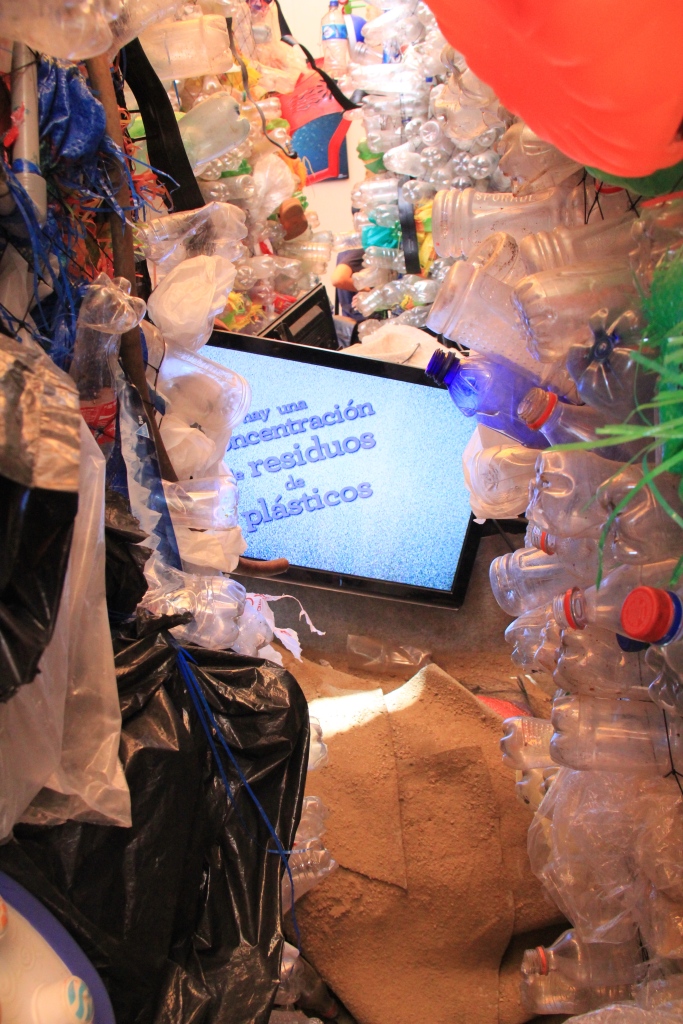
Giant plastic display at Voces por el Clima pushes the public to consider how much single use plastic they use
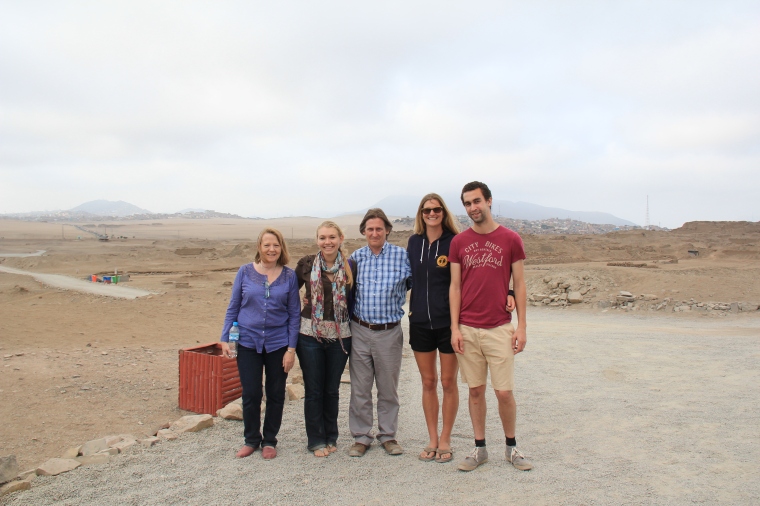
Tourist trip to the ruins at Pachacamac with Dr Carol Turley, Natasha Gallo, Dr. Phil Williamson and James Johnson


